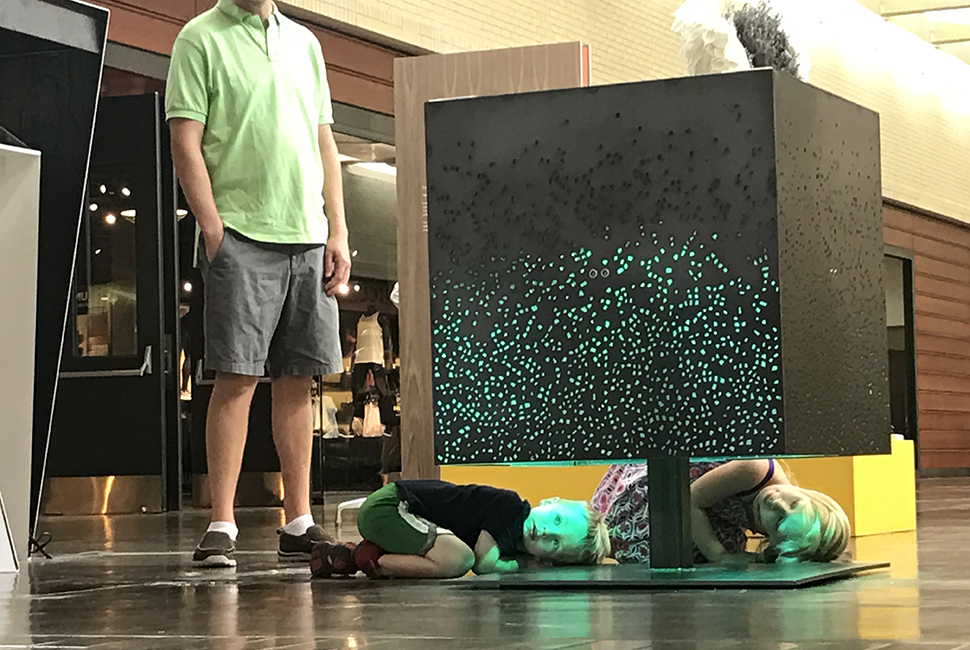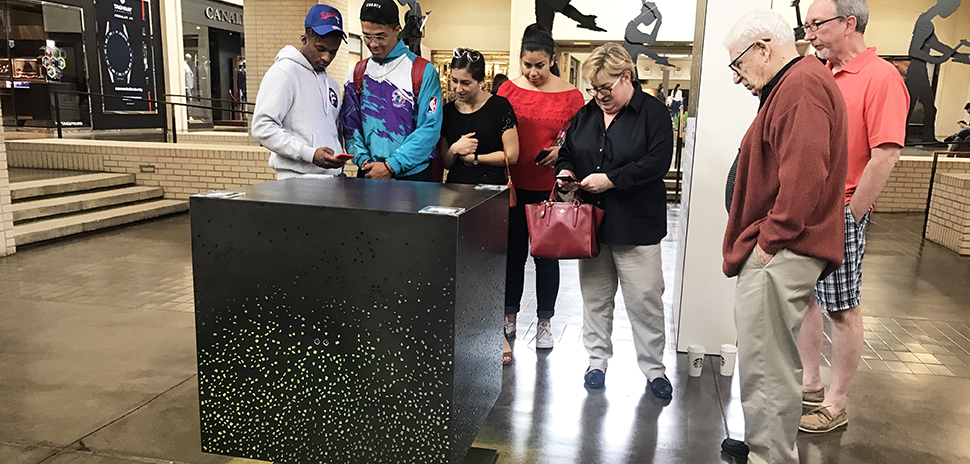Jack the robot is all about emotions, eager to know how you’re feeling and answer back.
Cube-shaped Jack is the creation of a team at the architecture and design firm Gensler. It’s a tool to obtain data about how people feel about the space they are in.
He reads emojis in text messages sent to his number by onlookers and responds to them with colors of light based on the type of emoji sent. He also replies with a text message of his own.
Jack, who recently was on display at NorthPark Center in Dallas, also can sense the area surrounding him.
“One of the things we found is that once people automated their responses, they started to send multiple texts.”
Andrew Triplett
Gensler said its original idea was to bring architecture into a normal day-to-day routine — “As a tool to not only measure emotional qualities of a space which is hard to do, especially in a confidential way, and to make a playful invention that is approachable and easy to interact with people,” Ellie Hopen, one of Jack’s creators, said.
Another of Jack’s creators, Andrew Triplett, said the company has gotten positive feedback about the robot.
“One of the things we found is that once people automated their responses, they started to send multiple texts,” Triplett said. “We want to look at it with different types of sensors and their general emotional state, it would be a survey but a playful thing.”
The data from the phone numbers will be logged to determine the traffic of an area, and sensors in the “brain” will detect when someone is nearby, causing Jack to changes colors.
Hope said that Jack is a tool not only to measure emotional qualities of a space, but is a playful invention that is approachable and easy to interact with.
“There is an immense value to this exploratory design. We learned so much along the way and encountered opportunity and change,” Hopen said. “That was the most valuable part of this project.”
“The implications of this application are massive for our clients.”
Andrew Triplett
Jack is made of Arduino software and hardware, which allows other electronic boards such as a sound board, sonographic sensors, capacitive touch sensors, and GSM shield — similar to a cellular phone — into the mix. Arduino is programmed to function along with these sensors to respond with an interaction that humans understand.
“The implications of this application are massive for our clients. Imagine putting Jack in a mixed-use development and gauging emotions of customers on certain days,” Triplett said. “If Tuesdays register a lot of boredom, the development can add live music or other programming.”
Two children check out Jack at NorthPark Center. [Photo Courtesy Gensler]
Delivering what’s new and next in Dallas-Fort Worth innovation, every day. Get the Dallas Innovates e-newsletter.




![Pudu offers many commercial service robots. Free 1-week trials of the PuduBot food delivery robot (far right above) are being offered to Dallas restaurants for a limited time. [Image: Pudu Robotics]](https://s24806.pcdn.co/wp-content/uploads/2021/11/Pudu-Robotics-970x464.jpg)





























